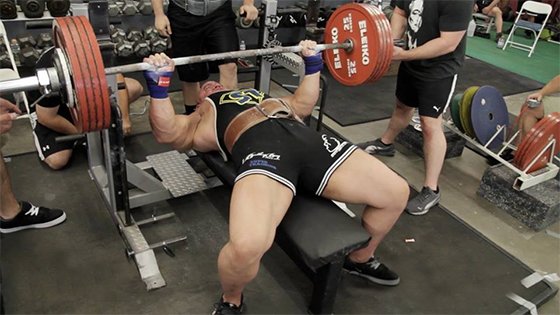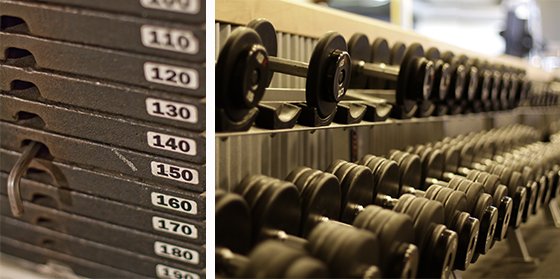It seems that old myths never die. Despite living in an age of unparalleled information exchange, most of the same old, same old fat loss untruisms keep getting passed around.
Though most of these unfounded pieces of advice are rather harmless, they may cause you to waste time on unnecessary practices.
The following fat loss myths are still prevalent. I see them passed around on a regular basis. In fact, I recently received a spam email that contained each of the myths listed below.
9 Fat Loss Myths
Myth #1 - Frequent Eating Ramps Up Your Metabolism
It seems this notion will never die.
There is no scientific evidence that shows frequent meal consumption increases the metabolism. A review of pertinent studies found that total daily energy expenditure was the same, regardless of the meal frequency used. (1)
Frequency of meals in this meta-analysis ranged between one and seventeen feedings per day. Researchers stated: "Studies using whole-body calorimetry and doubly-labelled water to assess total 24 h energy expenditure find no difference between nibbling and gorging."
Since this 1997 study, all new research has supported this conclusion.
 Myth #2 - You Must Eat Protein at Every Meal
Myth #2 - You Must Eat Protein at Every Meal
Proper daily protein intake is essential when losing fat. It helps your body hold on to valuable muscle, improving your body composition as you lose weight.
Though eating protein at every meal isn't a bad thing, it's not necessary. As long as you are reaching a reasonable daily protein intake level, it generally doesn't matter when and how you eat it.
Don't panic if you miss a protein meal. You are not going to go catabolic and lose all your gains. This obsessive compulsive belief has ruined many a day.
Myth #3 - You Shouldn't Eat Carbs after 2 PM
This is another load of bologna, as my grandmother would say. As long as your daily calories are in check, and you aren't overeating carbs in an unbalanced manner relative to the other macronutrients, it won't matter much when you eat them.
There is nothing magical about late afternoon or evening carb consumption. The human body doesn't contain a secret "off button" that suddenly turns all carbs into fat after 2 pm.
The assumption is that metabolic rate slows while sleeping. On the average, this is not true. While the human metabolism does initially decrease by 35% after zonking out (2), it later increases significantly when you achieve REM sleep.
The end result is that your metabolism while sleeping is no slower than your resting metabolic rate during the day. (3,4) Furthermore, it should be noted that daily exercise leads to an increase in your sleeping metabolic rate. (5)
Myth #4 - You Need to Perform Endless Hours of Cardio
Wrong, wrong and wrong. While 3 to 4 cardio sessions of 20 to 30 minutes each per week is great for overall health, cardio itself isn't an efficient fat loss tool - diet is.
Let's say you are walking 3 miles per hour. One mile of walking burns approximately 100 calories. You would need to walk 35 miles per week to burn off one pound of fat. Even if you had the time to walk this much, you wouldn't lose fat unless your eating habits were in check.
Don't overkill the cardio. Structure a proper diet plan and the weight will come off. Add is some cardio each week for improved health and conditioning.
Myth #5 - You Should Immediately Cut Calories
Blindly cutting calories doesn't address your bad habits, nor does it help you forge a new lifestyle. Without addressing the eating (and drinking) habits that got you in trouble in the first place, you are likely to fail and gain any weight you do lose back.
Before you rush out to cut calories, take an honest assessment of your diet. Try to remove 90% of the following:
- Sugary drinks and fruit juices (fruit juice is like fruit without all the good nutrition found in the pulp and skin)
- Processed foods (boxed meals, most frozen foods, etc.)
- Junk snacks (cookies, crackers, chips and candy)
Once you weed out most of these trash foods, you can then insert healthier options. At this point it is time to start watching your calories.

Myth #6 - Rapid Weight Loss is Always a Good Thing
While losing 4 to 5 pounds (or more) per week might be necessary for very obese individuals who are trying to regain good health as quickly as possible, it is not the best way to lose weight if you want to look good when you're done. Let's set aside talk about extremely obese individuals and talk about you.
Most of us need to drop about 20 to 40 pounds of fat, tops. If this is the case, to look your best after the fat loss process is done you want to lose about 1.5 to 2 pounds per week.
This rate of weight loss will allow you to maintain as much muscle mass as possible while losing mostly fat. This is what you want. If you drop the pounds in a rapid manner you will lose muscle and fat, and risk ending up looking thin, but still soft and somewhat flabby.
Myth #7 - Fasted Cardio is Superior for Fat Loss
Not true. Without getting into all the debates over types of cardio, and the optimal time to do cardio, I want to bring to the table some common sense.
We have already established that diet drives fat loss, and cardio has a minimal impact (unless you have time to exercise hours and hours each day). With this understood, I highly recommend simply doing:
- The type of cardio you enjoy.
- The type of cardio that is appropriate for your age, health and conditioning levels.
- Cardio at a time of day that makes the most sense to you.
While HIIT cardio may be the best form of cardio on paper, it also might be risky for you. Walk, swim, or go bowling. Just get moving. Once you start to build up your fitness and conditioning levels, then you can try more challenging forms of cardio if you desire.
Also, it's far better to perform cardio at a time of day where you are not rushed or tired. You are more likely to enjoy it and stick to it without missing cardio sessions.
Returning to the topic of fasted cardio, here is a quote from Brad Schoenfeld on the subject:
In conclusion, the literature does not support the efficacy of training early in the morning on an empty stomach as a tactic to reduce body fat. At best, the net effect on fat loss associated with such an approach will be no better than training after meal consumption, and quite possibly, it would produce inferior results. (6)
Myth #8 - Choose Low Fat Foods to Lose Fat
Eating fat does not make you fat. This is one of the prevalent, but ridiculous nutritional myths. It needs to die, and I encourage you to help with this process.
Excess calories makes you fat. Candy, cookies, chips, crackers, high calorie fast food, processed dinners and meals, sugary drinks...most people over-consume these food products while underconsuming real, whole, nutritionally dense foods.
Low fat foods often contain added sugar for taste, or are misleading to begin with. How many times have you seen this on a bag of candy or cookies: low fat! Of course these things are low fat; they're all sugar!
A "low fat" label on a food is meaningless. It can still be very high in calories.
A high calorie diet makes you gain weight. Control your calories, you control your weight. Fat will not cause you to gain weight if your eating habits are reasonable and balanced.
Myth #9 - Avoid Fruit During The Fat Loss Process
This is another foolish fat loss myth. Yes, fruit does have some sugar, but no, fruit is far from calorie dense and hard to overeat. In addition, fruit is packed with vitamins and minerals.
We will beat the same drum here: overall calorie intake is the most important factor when it comes to weight gain. I have yet to run into a single individual that "got fat" from eating too many strawberries, apples or oranges.
The reasonable amount of natural sugars and carbs found in fruit won't make much of a difference. They certainly won't cause your belly to grow if your overall calories are in check.
While losing fat it's best to eat a variety of fruits and veggies each week. This allows you to intake a broader spectrum of vitamins and minerals, and is great for overall health.
Fat Loss Recap
So to recap:
- Eat meals that fit your schedule and needs. There is no urgent reason to eat every 2 to 3 hours. This will not ramp up your metabolism, but it may cause you to waste a lot of time figuring out what to eat 6 to 10 times per day.
- It's ok to eat a meal that is short on, or devoid of protein. This will not stunt the fat loss or muscle retention process. Aim for a minimum amount of protein per day. It won't matter much when you eat this protein.
- Eating carbs after 2pm is ok as long as your overall calorie intake is in check. These carbs will not turn straight into fat.
- Your eating plan is your primary fat loss mechanism. Use cardio for overall health and conditioning, not as a primary source of fat loss. Cardio with a poor diet will not yield fat loss.
- Before you rush to cut calories, analyze your bad eating habits. Understand that if you don't take steps to curb these habits, you risk gaining fat back when your diet is over.
- To maximize muscle mass while losing fat, you want to lose about 1.5 to 2 pounds per week. This will help you look your best when the weight loss process is done.
- When and how you do cardio won't matter much. Pick a form of cardio you enjoy, and perform it at a time in the day when you are likely to have the most energy.
- Eating fat does not make you fat. Overeating calories makes you fat. Low fat founds are not inherently low in calories. They are often filled with added sugars. Buyer beware.
- Eat a wide variety of fruits each week. The small amount of sugar and carbs in fruit will have no impact on fat loss as long as your overall calories are reasonable.
1 Bellisle F, McDevitt R, Prentice AM. Meal frequency and energy balance. Br J Nutr. 1997 Apr;77 Suppl 1:S57-70.
2 Seale JL, Conway JM. Relationship between overnight energy expenditure and BMR measured in a room-sized calorimeter. Eur J Clin Nutr. 1999 Feb;53(2):107-11.
3 Zhang K, Sun M, Werner P, Kovera AJ, Albu J, Pi-Sunyer FX, Boozer CN. Sleeping metabolic rate in relation to body mass index and body composition. Int J Obes Relat Metab Disord. 2002 Mar;26(3):376-83.
4 Mischler I, Vermorel M, Montaurier C, Mounier R, Pialoux V, Pequignot JM, Cottet-Emard JM, Coudert J, Fellmann N. Prolonged daytime exercise repeated over 4 days increases sleeping heart rate and metabolic rate. Can J Appl Physiol. 2003 Aug;28(4):616-29.
5 Biston P, Van Cauter E, Ofek G, Linkowski P, Polonsky KS, Degaute JP. Diurnal variations in cardiovascular function and glucose regulation in normotensive humans. Hypertension. 1996 Nov;28(5):863-71.
6 Brad Schoenfeld, MSc, CSCS, NSCA-CPT. Does Cardio After an Overnight Fast Maximize Fat Loss? http://www.lookgreatnaked.com/articles/does_cardio_after_an_overnight_fast_maximize_fat_loss.pdf


























